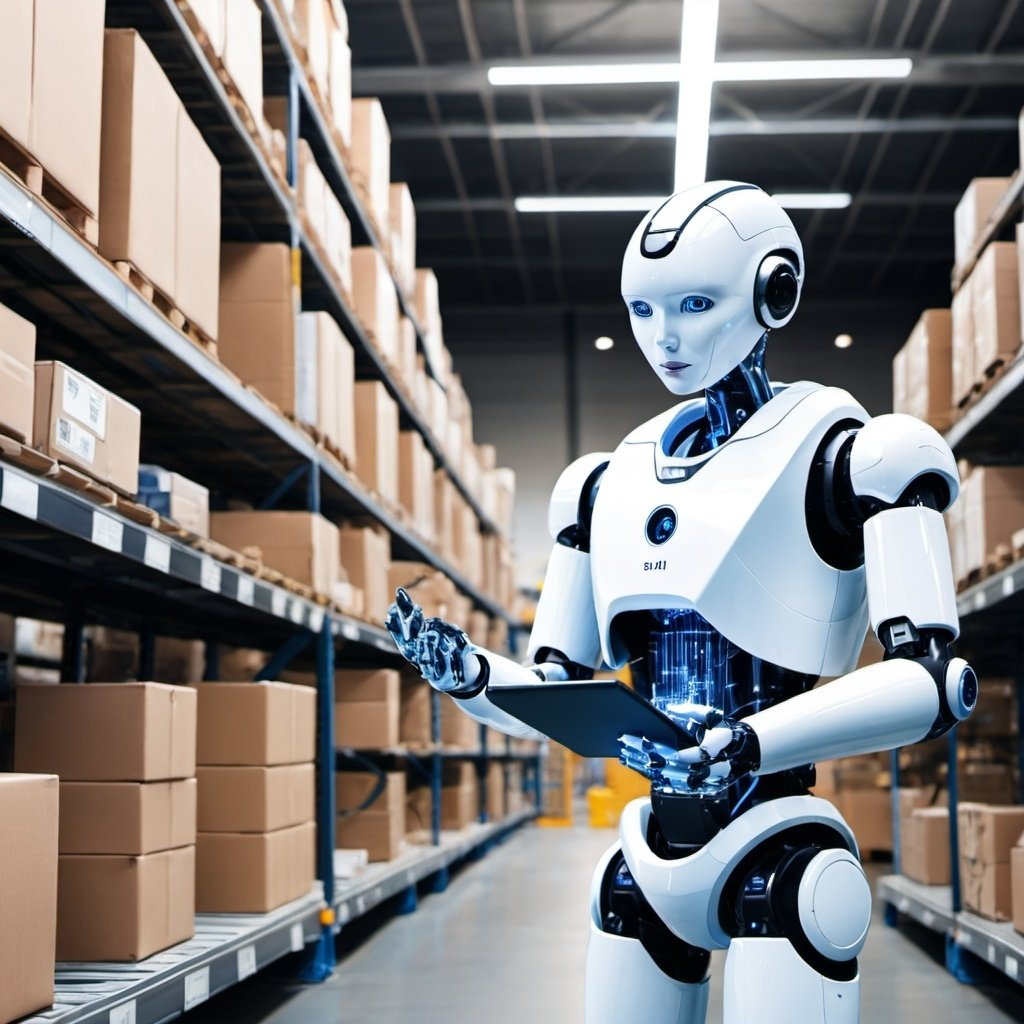Artificial Intelligence (AI) is proving to be a disruptive force in the ever-changing corporate operations landscape, especially inventory management. AI-driven solutions revolutionize inventory handling, monitoring, and optimization as companies pursue efficiency, accuracy, and streamlined operations.
The top ten ways that artificial intelligence transforms inventory management are covered in this article, which also covers supply chain management, artificial intelligence, inventory management, and AI management. AI is bringing a new era of data-driven and intelligent inventory procedures, from demand forecasting to predictive analytics, essential for keeping a competitive edge in today’s fast-paced industry. Here are the ten most significant aspects of AI changes in inventory management.
- Enhanced support for customers Using Chatbots
Inventory management is expected to develop, and AI chatbots are becoming crucial to inventory management. They simplify tasks; DHL’s interaction with smart gadgets is one example. Voice-assisted chatbot usage is increasing, consistent with predictions of significant adoption of digital voice assistants, and this raises customer happiness and retention by improving the customer experience.
- Enhanced Workplace efficiency with AI Algorithms
AI algorithms, especially in artificial intelligence inventory management, contribute to increased workplace efficiency. AI algorithms—a subset of machine reinforcement learning—consistently increase task efficiency by enabling machines to learn and function independently. These algorithms provide constant parameter monitoring in inventory management, freeing up resources and relieving employees of repetitive work.
- Effortless Demand Forecasting
Demand forecasting is moving from being done by hand to AI in inventory management. Artificial intelligence systems use real-time data from multiple sources to estimate demand accurately and instantly. When external data is combined with machine learning, productivity increases and surpasses that of manual approaches. AI’s benefits include decreasing supply chain errors and reducing sales losses brought on by inaccurate inventory counts and customer demand.
- Wiser Warehouse Management
AI improves communication, streamlines logistics, and automates inventory activities to revolutionize warehouse management. Automated methods provide a more rapid and precise flow of information, while cloud-based gadgets offer real-time updates. AI’s efficiency helps logistics activities like pallet counting by cutting down on processing time and inaccuracy. In addition to automating processes like pay calculations and performance updates, AI-driven inventory management maximizes resources and yields insightful data. All in all, these innovations improve the efficiency of warehouse operations, increasing their competitiveness and focus.
- Predictive Analytics’s Help in Reducing Downtime
AI-powered predictive analytics is a valuable tool for decision-makers that makes data-driven judgments possible by identifying abnormalities and forecasting possible failure patterns. Proactive downtime prevention strategies, such as component replacements before problems develop, are made possible by this affordable approach.
- A better way to Enhancing Supplier Relationship Management
AI algorithms enhance supplier relationship management by evaluating critical variables such as delivery times, product quality, and pricing. This data-driven research enables firms to make informed decisions when selecting and maintaining supplier agreements, supporting supply chain stability. This strategic AI integration ensures a more efficient and streamlined approach to managing supplier relationships, adding to the supply chain’s overall success.
- More Profitable Marketing Strategies
Artificial intelligence-driven inventory management gives organizations helpful information about product demand and industry trends. Companies may build a solid database of potential customers using machine learning-based anomaly detection and AI’s capacity to detect changes in consumer interest. This data-driven strategy makes creating bespoke and personalized marketing campaigns easier, allowing businesses to remain ahead of changing trends and consumer preferences.
- Enhancing Warehouse Management
AI is required in optimizing warehouse management by analyzing data on order frequency, picking trends, and delivery timetables. This study helps to optimize warehouse layouts, effective storage options, and order fulfillment processes. The emphasis is on exploiting data-driven insights to improve warehouse efficiency and organization.
- AI is expanding Artistic Creativity
AI is reinventing artistic creativity, challenging established norms, and expanding the creative landscape’s potential. This prediction anticipates a dynamic partnership between human imagination and computer intelligence, resulting in a rich tapestry of creation that defies traditional boundaries.
- AI-powered Automated Material Procurement
AI-powered automated material procurement Automates activities such as vendor matching and spend classification; automated material procurement accelerates critical production operations. According to McKinsey, there has been a 15% decrease in logistical expenses and significant inventory and service standards enhancements. This connection improves productivity and lowers errors in supplier and document management.












